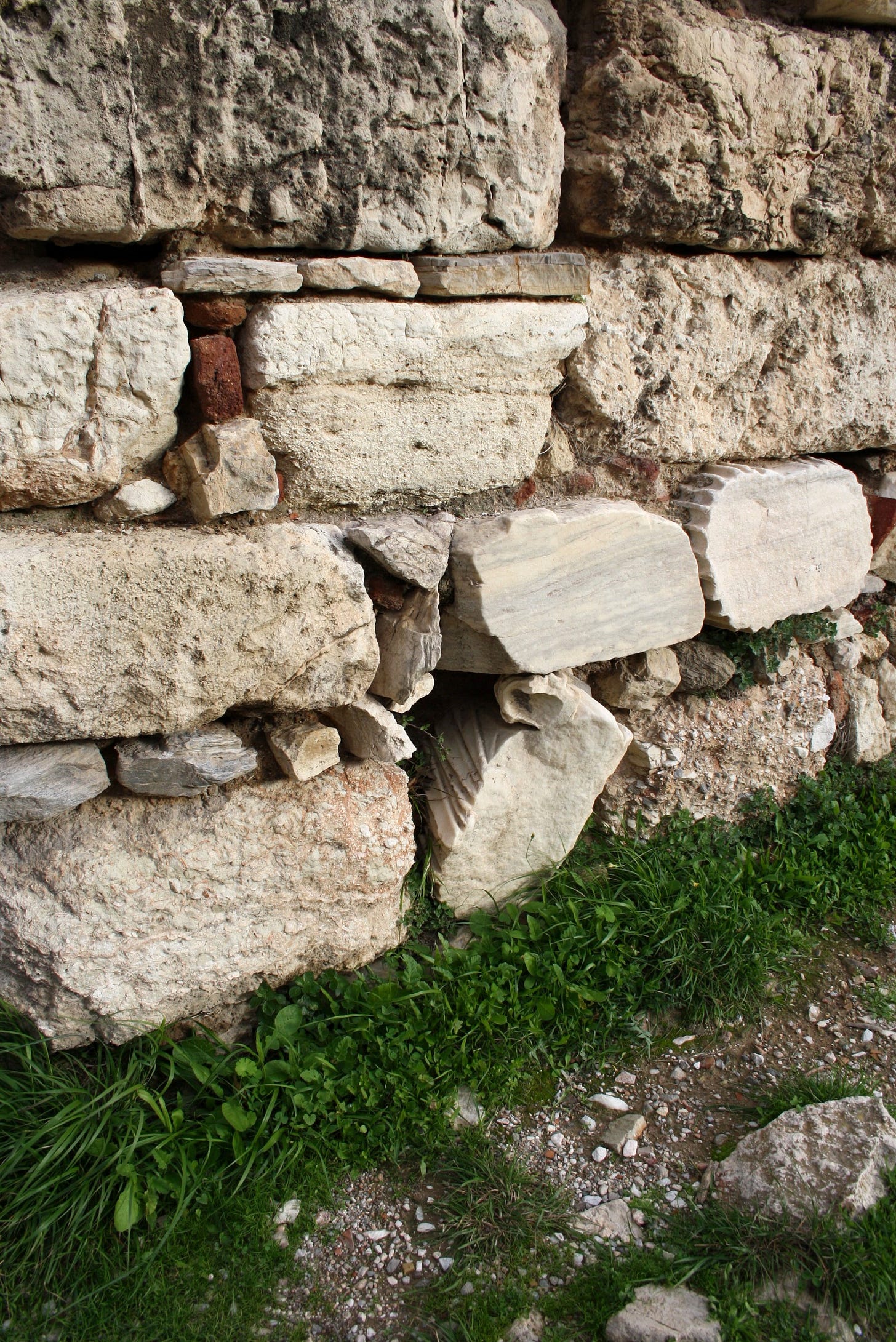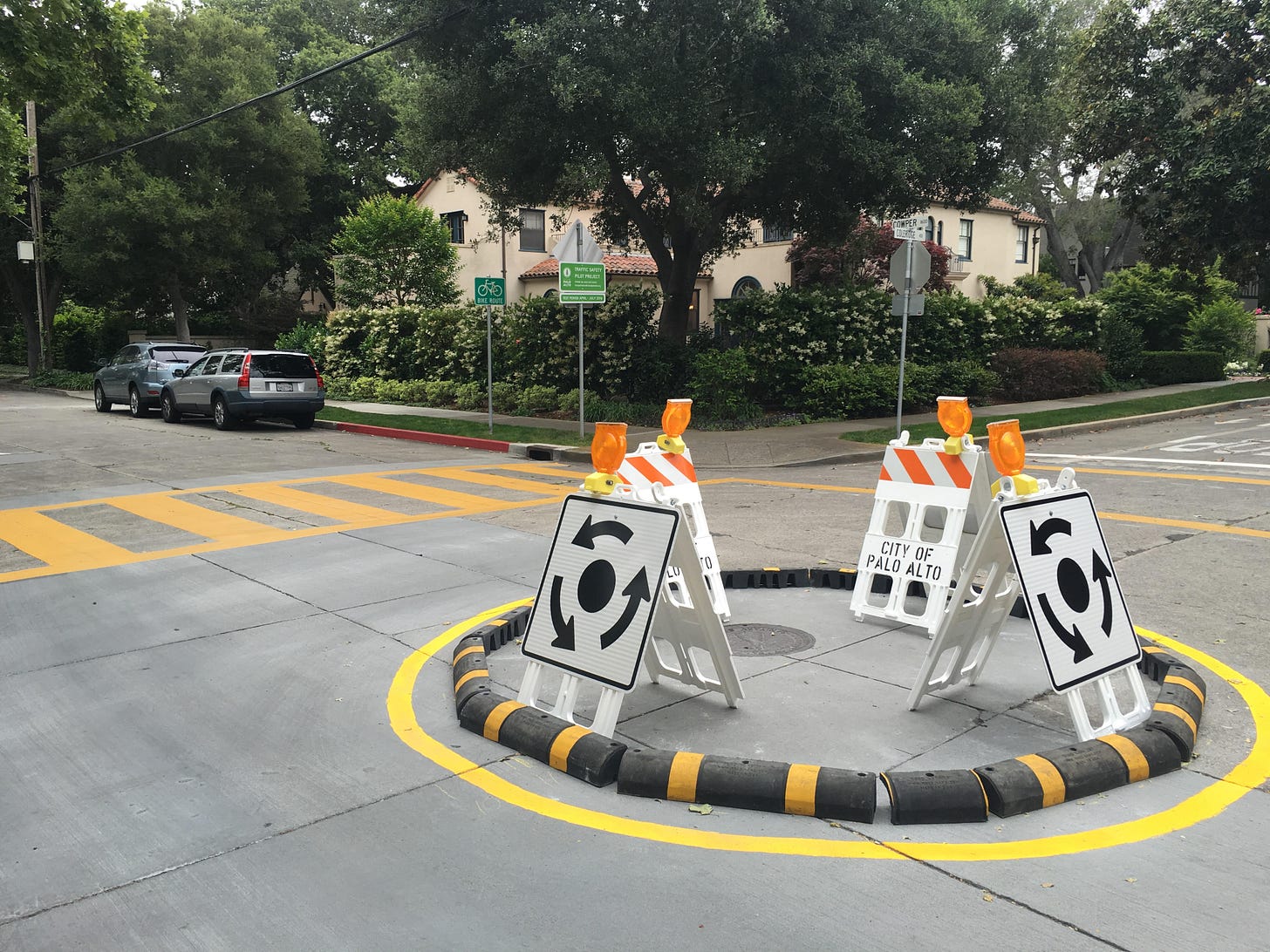Adaptive Reuse Pt 1: Lessons from Spolia
Tactical and practical ways to engage with your public realm
While in Greece for over a month last year, I noticed some peculiar things about buildings in an ancient city. I came to learn two unusual words which give context to a contemporary city.
Both words stem around this concept of adaptive reuse: repurposing old things for new uses. The words are Spolia, and Palimpsest.
Spolia:
Using what you have to to imperfectly satisfy immediate needs.
Around Athens, marble inlays from pagan buildings can be seen in rough-hewn cut-stone in Byzantine churches. Using ruins to add to new buildings wasn't just aesthetic—it was also practical.
In the agora, there are fortifications called the Post-Herulian walls; walls made up of whatever they could find to protect Athens after a successful invasion of the Germanic Heruli tribe.
Spolia shows cities building with urgency and necessity to meet pressing needs.

It became an obsession for me to recognize spolia and see it throughout Europe. Ruins, like dead languages, are static, and give us a false sense of permanence. But cities were constantly changing: living, dying, evolving.
And this is true of modern cities. We pine for the ‘good old days’ but we are acting nostalgic; living in memories minus anxiety. The truth is your city was never a static thing. It always had problems too big to solve, but progressed anyways.
This contributes, in my opinion, to our obsession with doing nothing until there’s funding to fix everything at once. We see the public realm as a static theatrical set which, at somepoint during intermission, needs to be radically altered. But in reality, intermission never comes.
We need to embrace iterative changes which involve using what we have at the moment to attack the smallest most pressing needs. This is where spolia fits in a modern context.
A good example of this is Jersey City, which recently attained zero traffic deaths for a calendar year. How did they do it? By not sticking to protocol. Building temporary versions to test things out with materials on hand—even ones which weren’t formally compliant.
The cities which are getting things done are those which feel the urgency of the matter. If your home was being invaded, would you refuse to block the door with a table because you should have installed a more robust lock system?
If we know a traffic circle will slow down neighborhood traffic, should we forego installing a simple one because we prefer to have a concrete vs. sandbag one?

Spolia allows us to prove the concept, and save lives, before we have the money. It is the added benefit of testing before we invest in something which might potentially not work.
Parking stops, flex posts, cones, road signs, flower pots, barrels, old tires, leftover paint, and more can be used to test and experiment in challenging areas. And some of these things, used in permanent cases, could be considered contemporary spolia.
Continued next week in Part 2: Palimpsest…
Resource:
This book on tactical urbanism is a great place to start.
Something you should do:
Look up, and reach out to, a member of your local Department of Transportation. Often, they are called {your city} + Department of Transportation. E.g. Nashville Department of Transportation (NDOT).
Sometimes, though, they are just a part of a public works department. Do some digging, reach out to a few people, and see who is willing to meet!
Ask them if the department has attempted any tactical changes. Ask their general thoughts on it. They might be dismissive, or even patronizing. But with each interaction, you have an opportunity to grow a relationship! You will learn key terms and will start to recognize them as you show up to events.
This past year there were HUGE wins in Chattanooga that wouldn’t have happened if there wasn’t the relational capital between key citizens and public works officials!



You are reminding me to contact CHA PWorks’ Ross (blanking in last name) to thank them for the recently restriped bike lane AND added reflective bollards on Dallas Rd.